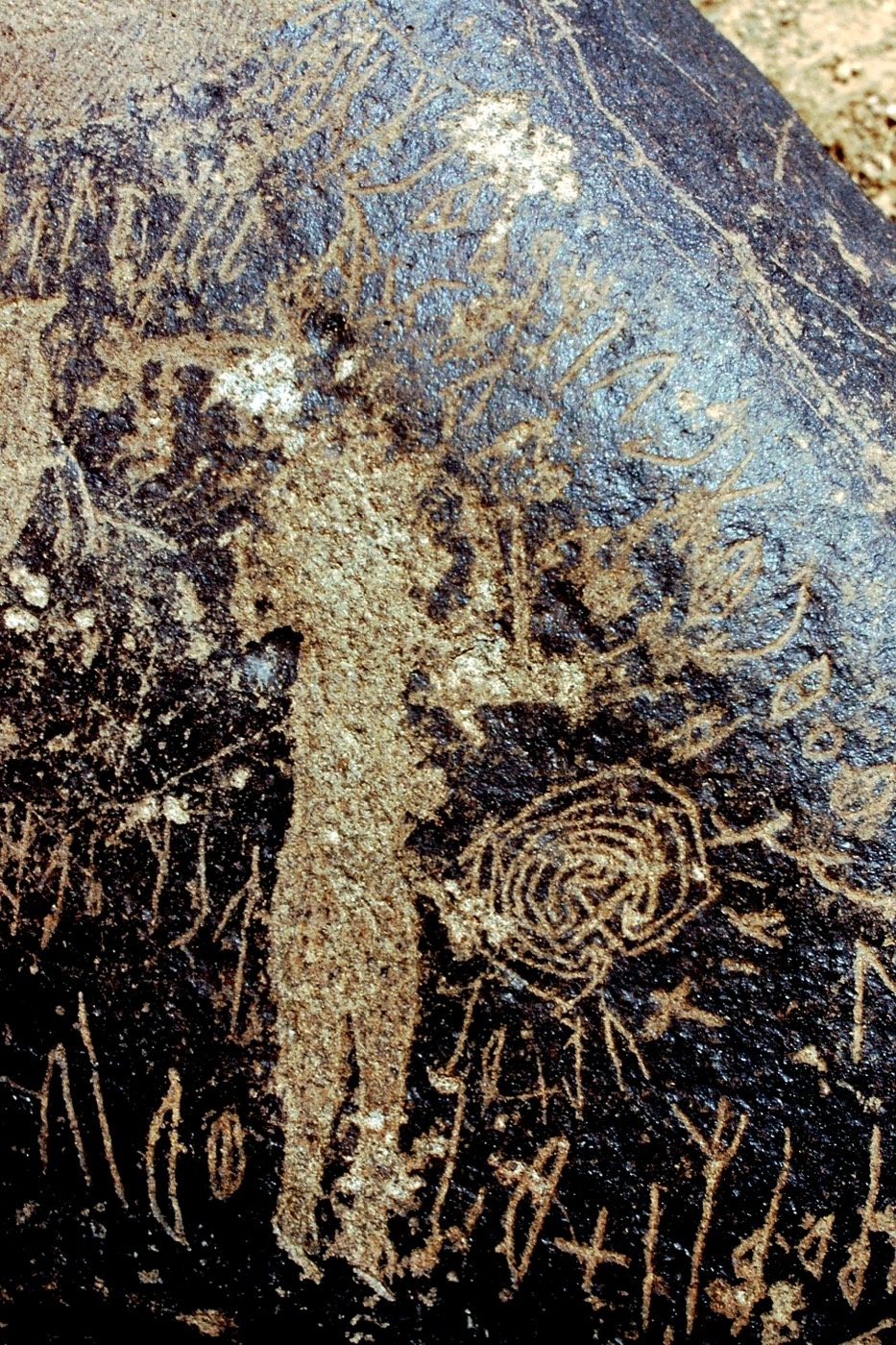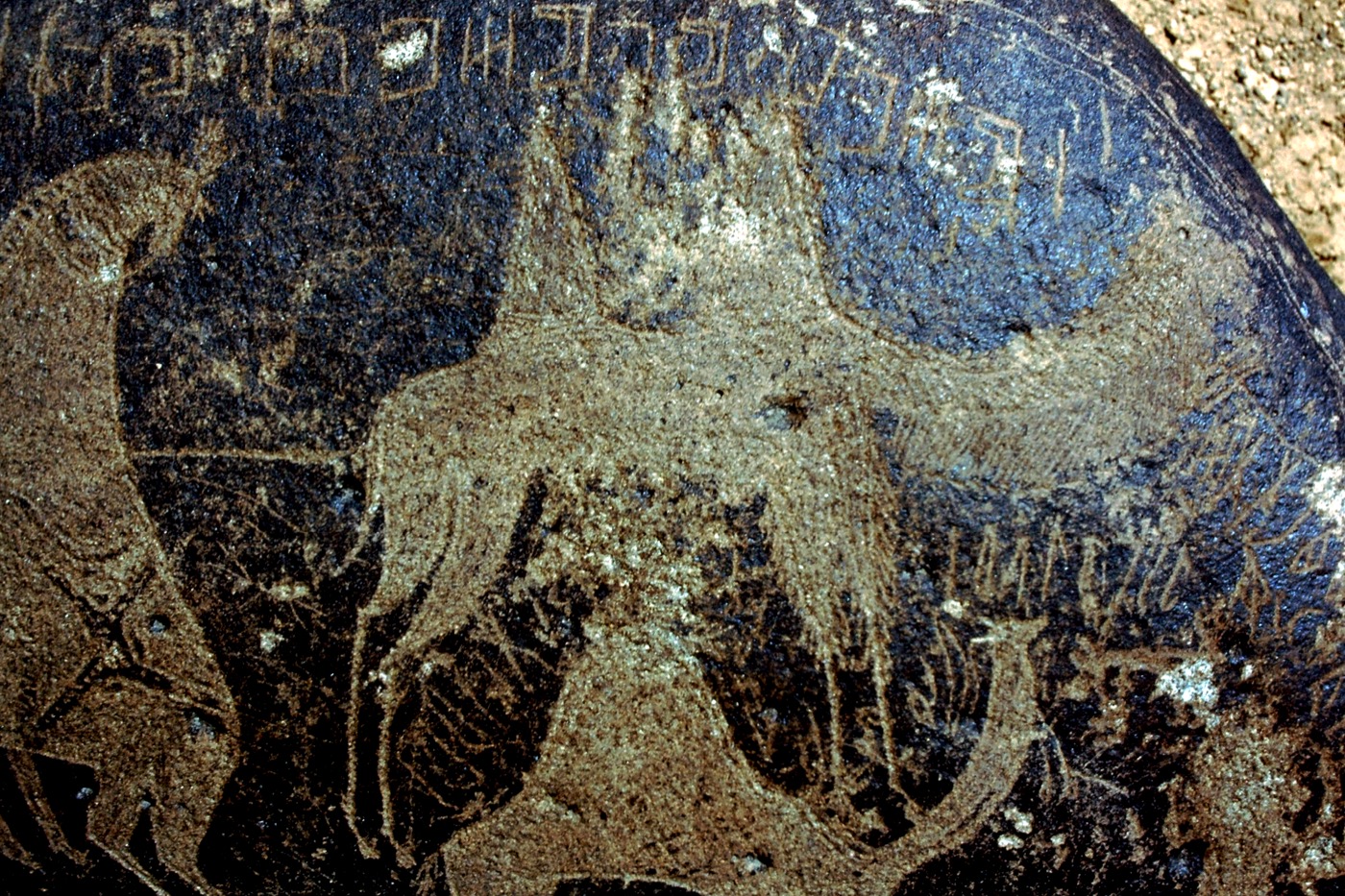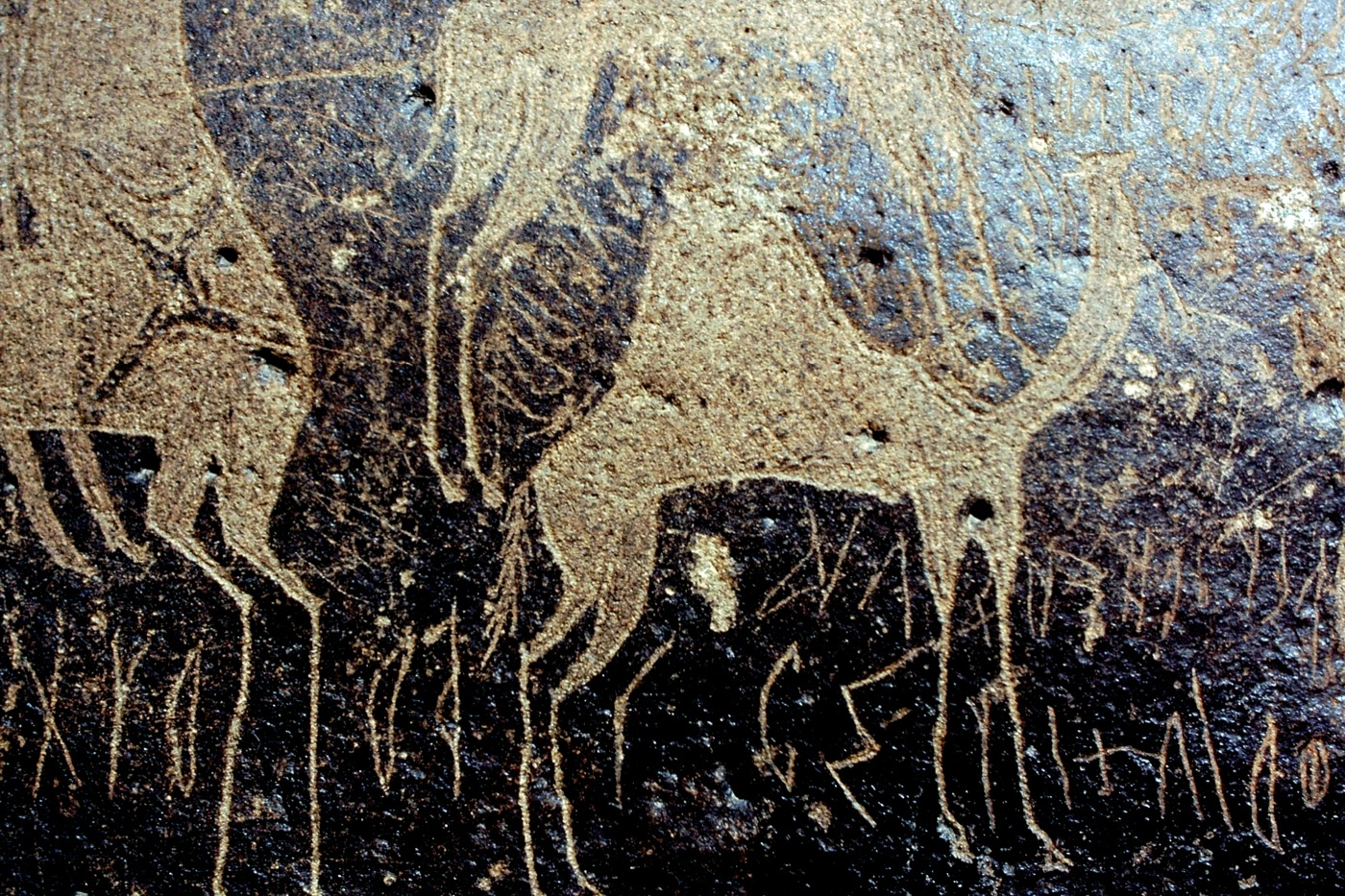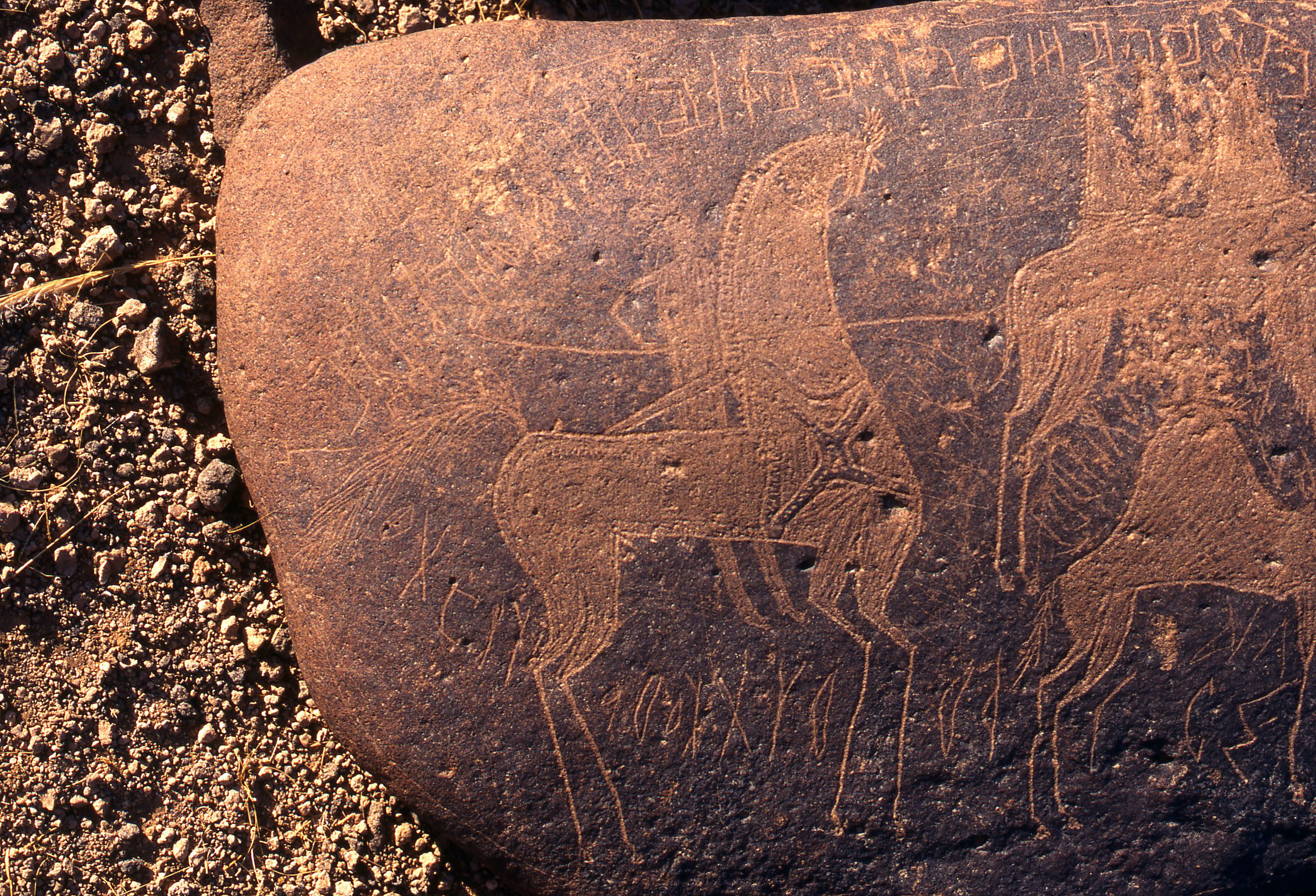LP 326
Text Information
- Siglum
- LP 326
- Alternative Sigla
- Is.M 113; MISS p. 473
- Transliteration
- l ms¹k bn ʾbrqn b[n] {m}{s¹}k w rʿy h- ḍʾn s¹nt s¹rt mlk b- h- ʿrḍ f h lt s¹lm
- Translation
- By Ms¹k son of ʾbrqn son of {Ms¹k} and he pastured the sheep the year Mlk served in the great army and so O Lt [grant] security
Interpretation
- Apparatus Criticus
- LP 326: s¹nt s¹r (h-) mlk - h- ʿrḍ "the year {the} king travelled in this valley [?]" for s¹nt s¹rt mlk b- h- ʿrḍ "the year Mlk served in the [great] army."
- Commentary
- The inscription was carved after the the drawing and LP 325, which it carefully avoids. The s¹ of the third name is attached to the y of yʿwr in LP 325 and the letter(s?) before it is/are damaged by abrasions. The word after s¹nt is clearly s¹rt (on both the original and Littmann's copy) and LP's reading s¹r h- mlk is therefore impossible. For our interpretation see MISS p. 468. The last three letters are lightly scratched. For the verb s¹rt "to serve in a military unit" see Macdonald 2014: 59–160, and n. 78. For ʿrḍ compare Arabic arḍ/irḍ an "army" or a "great army" (Lane 2007a, 2008a).
- Provenance
- Al-ʿĪsāwī is the name of a probably ancient well between two headlands on the eastern side of the Wādī Shām as it runs northwards from the modern Al-Namārah dam to the Ruḥbah. The well is large, stone lined and with stone water-channels running from it. The main concentration of published inscriptions is on the top of the northern headland, but there also many inscriptions on its south-west slopes, coming down to the well and on the southern headland, on the crest of which is a stone tower. Littmann visited the site twice when he and other members of the expeditions copied some 450 inscriptions. Between 1996 and 2003, the Safaitic Epigraphic Survey Programme [SESP] made a comprehensive survey of the site recording over 3500 inscriptions.
- Associated Inscriptions
- Littmann, E. Safaïtic Inscriptions. Syria. Publications of the Princeton University Archaeological Expeditions to Syria in 1904–1905 and 1909. Division IV. Section C. Leiden: Brill, 1943.
- Lane, E.W. An Arabic-English Lexicon, Derived from the Best and Most Copious Eastern Sources. (Volume 1 in 8 parts [all published]). London: Williams & Norgate, 1863-1893.
- Macdonald, M.C.A., Al Muʾazzin, M. & Nehmé, L. Les inscriptions safaïtiques de Syrie, cent quarante ans après leur découverte. Comptes rendus des séances de l'Académie des Inscriptions & Belles-Lettres 1996: 435-494.
- Macdonald, M.C.A. ‘Romans Go Home’? Rome and other ‘Outsiders’ as viewed from the Syro-Arabian Desert. Pages 145-163 in J.H.E. Dijkstra & G. Fisher (eds), Inside and Out. Interactions between Rome and the Peoples on the Arabian and Egyptian Frontiers in Late Antiquity. (Late Antique History and Religion, 8). Louvain: Peeters, 2014.
- Inscriptions recorded at al-ʿĪsāwī by Michael Macdonald, on the Safaitic Epigraphic Survey Programme, 1995–2003, and published here.
- Site
- Al-ʿĪsāwī, Rif Dimašq Governorate, Syria
- Date Found
- 1904–1905; 1996–2003
- Current Location
- Al-Suweidah Museum (Registration no. unknown)
- Subjects
- Date (s¹nt), Deity, Domestic animals, Genealogy, Isolated Prayer, Military, Pasturing
- Script
- Safaitic
- Old OCIANA ID
- #0008910
- Download Images






